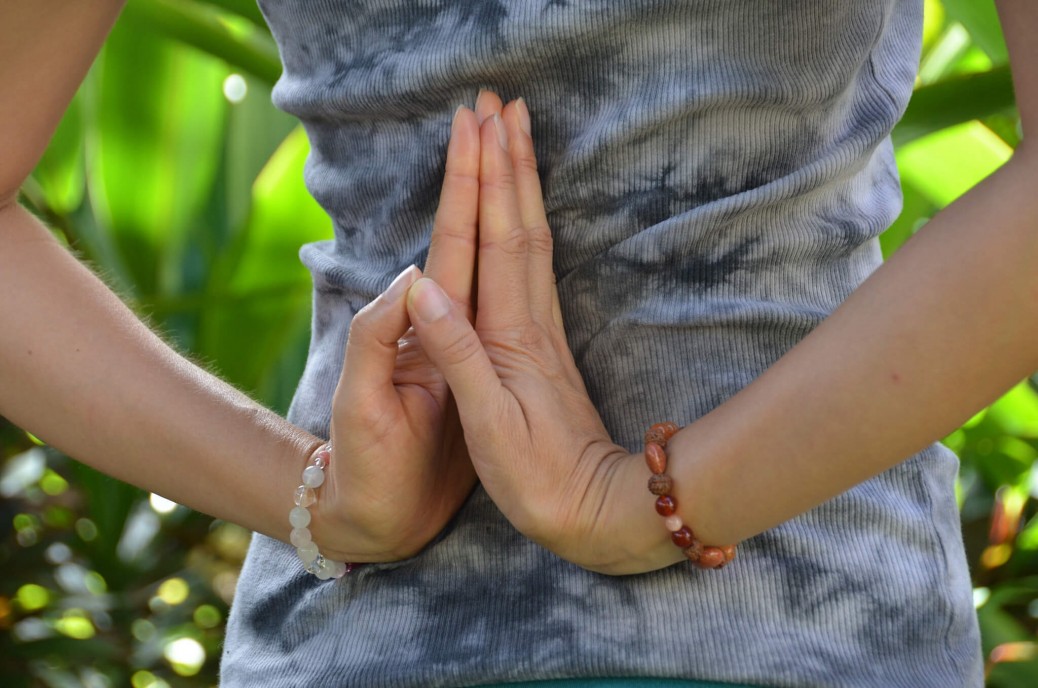JUST the other day, I was reading an old Indian fable, the fable of the woodcutter. The story goes this way: An old woodcutter was coming back from the forest carrying a big, heavy load of wood on his head. He was very old, tired – not only tired of the day’s routine work, tired of life itself. Life had not been much to him, just a weary round. Every day the same: going to the forest early in the morning, the whole day cutting the wood, then carrying the load back to the town by the evening. He could not remember anything else, only this. And only this had been the whole of his life. He was bored. Life had not been a meaningful thing to him; it carried no significance. Particularly on that day, he was very tired, perspiring. It was hard to breathe, carrying the load and himself.
Suddenly, as a symbolic act, he threw the load. That moment comes to everybody’s life, when one wants to throw the load. Not only that wood bundle on his head, it had become a symbolic act: he threw with it the whole life. He fell to the ground on his knees, looked at the sky and said, “Ah, Death. You come to everybody, but why don’t you come to me? What more suffering have I to see? What more burdens do I have to carry still? Am I not punished enough? And what wrong have I committed?”
He could not believe his eyes – suddenly, Death appeared. He could not believe it.
He looked around, very much shocked. Whatsoever he was saying, he had never meant it. And he had never heard of anything like this, that you call Death, and Death comes.
And Death said, “Did you call me?”
The old man suddenly forgot all weariness, all tiredness, the whole life of dead routine. He jumped up and he said, “Yes… yes, I called you. Please, could you help me to put the load, the burden, back on my head? Seeing nobody here, I called you.”
There are moments when you are tired of life. There are moments when you would like to die. But dying is an art; it has to be learned. And to be weary of life does not really mean that deep down the lust for life has disappeared. You may be weary of a particular life, but you are not weary of life as such. Everybody becomes tired of a particular life, the dead routine, the weary round, the same thing again and again, a repetition – but you are not weary of life itself. And if Death comes you will do the same as the woodcutter did. He behaved perfectly humanly. Don’t laugh at him. Many times you have also thought to be finished with all this nonsense that goes on. For what to continue it? But if Death suddenly appears? You will not be ready.
Only a yogi can be ready to die, because only a yogi knows that through a voluntary death, a willing death, the infinite life is attained. Only a yogi knows that death is a door; it is not the end. In fact it is the beginning. In fact beyond it open the infinities of God. In fact beyond it you are for the first time really, authentically alive. Not only your physical part of the heart throbs, you throb.
Not only are you excited by outer things, you are made ecstatic by the inner being. The life abundant, the life eternal, is entered through the door of death.
Everybody dies, but then death is not voluntary; then death is forced on you.
You are unwilling: you resist, you cry, you weep; you would like to linger a little longer on this earth in this body. You are afraid. You can’t see anything except darkness, except the end. Everybody dies unwillingly, but then death is not a door. Then you close your eyes in fear.
For the people who are on the path of yoga, death is a willing phenomenon; they Will It. They are not suicidal. They are not against life: they are for greater life.
They sacrifice their life for a greater life. They sacrifice their ego for a greater self.
They sacrifice their self, also, for the supreme self. They go on sacrificing the limited for the unlimited. And this is what growth is all about: to go on sacrificing that which you have for that which becomes possible only when you are empty, when you don’t have anything.
Patanjali’s whole art is of how to attain to the state where you can die willingly, surrender willingly, with no resistance. These sutras are a preparation, a preparation to die and a preparation to a greater life.
Sthir sukham asanam.
POSTURE SHOULD BE STEADY AND COMFORTABLE.
Patanjali’s yoga has been very much misunderstood, misinterpreted. Patanjali is not a gymnast, but yoga looks like it is a gymnastics of the body. Patanjali is not against the body. He is not a teacher to teach you contortions of the body. He teaches you the grace of the body, because he knows only in a graceful body a graceful mind exists; and only in a graceful mind a graceful self becomes possible; and only in a graceful self, the God.
Step by step, deeper and higher grace has to be attained. Grace of the body is what he calls asan, posture. He’s not a masochist. He is not teaching you to torture your body. He is not a bit against the body. How can he be? He knows the body is going to be the very foundation-stone. He knows if you miss the body, if you don’t train the body, then higher training will not be possible.
The body is just like a musical instrument. It has to be rightly tuned; only then will the higher music arise out of it. If the very instrument is somehow not in the right shape and order, then how can you imagine, hope, that the great harmony will arise out of it? Only discordance will arise. Body is a veena, a musical instrument.
“STHIR SUKHAM ASANAM” – the posture should be steady and should be very, very blissful, comfortable. So never try to distort your body, and never try to achieve postures which are uncomfortable.
For the Westerners, sitting on the ground, sitting in padmasana, lotus posture, is difficult; their bodies have not been trained for it. There is no need to bother about it. Patanjali will not force that posture on you. In the East people are sitting from their very birth, small children sitting on the ground. In the West, in all cold countries, chairs are needed; the ground is too cold. But there is no need to be worried about it. If you look at Patanjali’s definition, what a posture is, you will understand: it should be steady and comfortable.
If you can be steady and comfortable in a chair, it is perfectly okay – no need to try a lotus posture and force your body unnecessarily. In fact, if a Western person tries to attain to lotus posture it takes six months to force the body; and it is a torture. There is no need. Patanjali is not in any way helping you, in any way persuading you, to torture the body. You can sit in a tortured posture, but then it will not be a posture according to Patanjali.
A posture should be such that you can forget your body. What is comfort? When you forget your body, you are comfortable. When you are reminded continuously of the body, you are uncomfortable. So whether you sit in a chair or you sit on the ground, that’s not the point. Be comfortable, because if you are not comfortable in the body you cannot long for other blessings which belong to deeper layers: the first layer missed, all other layers closed. If you really want to be happy, blissful, then start from the very beginning to be blissful. Comfort of the body is a basic need for anybody who is trying to reach inner ecstasies.
“Posture should be steady and comfortable.” And whenever a posture is comfortable it is bound to be steady. You fidget if the posture is uncomfortable.
You go on changing sides if the posture is uncomfortable. If the posture is really comfortable, what is the need to fidget and feel restless and go on changing again and again?
And remember, the posture that is comfortable to you may not be comfortable to your neighbor; so please, never teach your posture to anybody. Everybody is unique. Something that is comfortable to you may be uncomfortable to somebody else.
Everybody has to be unique because everybody is carrying a unique soul. Your thumbprints are unique. You cannot find anybody else all over the world whose thumbprints are just like yours. And not only today: you cannot find anybody in the whole past history whose thumbprints will be like yours, and those who know, they say even in the future there will never be a person whose thumbprint will be like yours. A thumbprint is nothing, insignificant, but that too is unique.
That shows that everybody carries a unique being. If your thumbprint is so different from others’, your body, the whole body, has to be different.
So never listen to anybody’s advice. You have to find your own posture. There is no need to go to any teacher to learn it; your own feeling of comfort should be the teacher. And if you try – within a few days try all the postures that you know, all the ways that you can sit – one day you will fall upon, stumble upon, the right posture. And the moment you feel the right posture, everything will become silent and calm within you. And nobody else can teach you, because nobody can know how your body harmony, in what posture, will exactly be steady, comfortable.
Try to find your own posture. Try to find your own yoga, and never follow a rule, because rules are averages. They are just like, in India there are 136.64 crores people (In 2019): somebody is five feet tall, somebody five five, somebody five six, somebody six feet, somebody six and a half feet. 136.64 crores people: you calculate their heights and then you divide the total height of 136.64 crores people by 136.64 crores; then you will come to an average height. It may be four feet eight inches or something. Then you go and search for the average person – you will never find. Average person never exists. Average is the most false thing in the world. Nobody is an average. Everybody is himself; nobody is an average.
Average is a mathematical thing – it is not real, it is not actual.
All rules exist for averages. They are good, to understand a certain thing, but never follow them. Otherwise you will feel uncomfortable. Four feet eight inches is the average height! Now you are five feet, four inches longer – cut it.
Uncomfortable… walk in such a way so you look like the average: you will become an ugly phenomenon, an Ashtha walker. You will be like a camel, crooked everywhere. One who tries to follow the average will miss.
Average is a mathematical phenomenon, and mathematics does not exist in existence. It exists only in man’s mind. If you go and try to find mathematics in existence you will not find it. That’s why mathematics is the only perfect science: because it is absolutely unreal. Only with unreality can you be perfect. Reality does not bother about your rules, regulations; reality moves on its own.
Mathematics is a perfect science because it is mental, it is human. If man disappears from the earth, mathematics will be the first thing to disappear. Other things may continue, but mathematics cannot be here.
Always remember, all rules, disciplines, are average; and average is non existential. And don’t try to become the average; nobody can become. One has to find his own way. Learn the average, that will be helpful, but don’t make it a rule. Let it be just a tacit understanding. Just understand it, and forget about it.
It will be helpful as a vague guide, not as an absolutely certain teacher. It will be just like a vague map, not perfect. That vague map will give you certain hints, but you have to find out your own inner comfort, steadiness. How you feel should be the determining factor. That’s why Patanjali gives this definition, so that you can find out your own feelings.
“STHIR SUKHAM ASANAM.” There cannot be any better definition of posture: Posture should be steady and comfortable.
In fact I would like to say it the other way, and the Sanskrit definition can be translated in the other way: Posture is that which is steady and comfortable.
STHIR SUKHAM ASANAM: That which is steady and comfortable is posture.
And that will be a more accurate translation. The moment you bring “should,” things become difficult. In the Sanskrit definition there is no “should,” but in the English it enters. I have looked into many translations of Patanjali. They always say, “Posture should be steady and comfortable.” In the Sanskrit definition – STHIR SUKHAM ASANAM – there is no “should.” STHIR means steady, SUKHAM means comfortable, ASANAM means posture – that’s all. “Steady, comfortable: that is the posture.”
Why does this “should” come in? Because we would like to make a rule out of it.
It is a simple definition, an indicator, a pointer. It is not a rule. And remember it always: that people like Patanjali never give rules; they are not so foolish. They simply give pointers, hints. You have to decode the hint into your own being.
You have to feel it, work it out; then you will come to the rule, but that rule will be only for you, for nobody else.
If people can stick to it, the world will be a very beautiful world – nobody trying to force anybody to do something, nobody trying to discipline anybody else.
Because your discipline may have proved good for you, it may be poisonous for somebody else. Your medicine is not necessarily a medicine for all. Don’t go on giving it to others.
But foolish people always live by rules.
Tags: Patanjali Yoga Sutra 29 Steady And Comfortable










